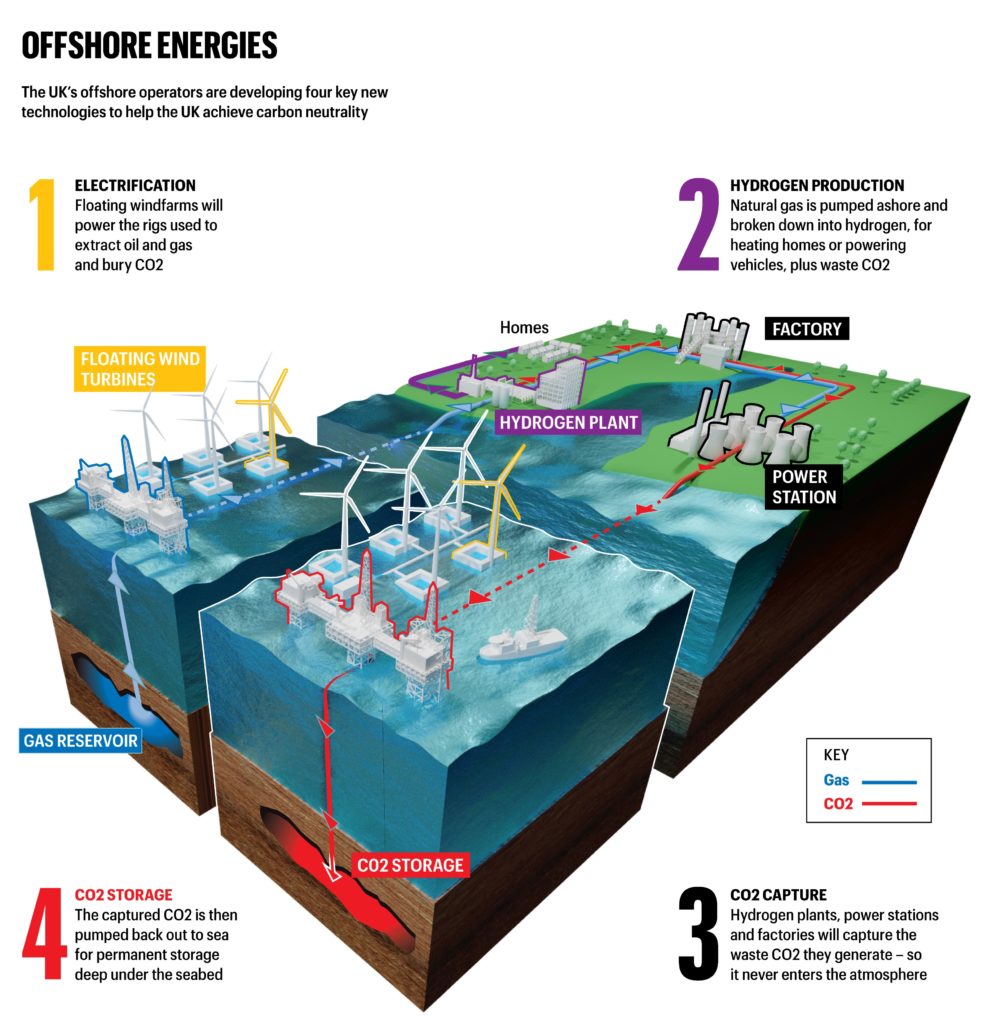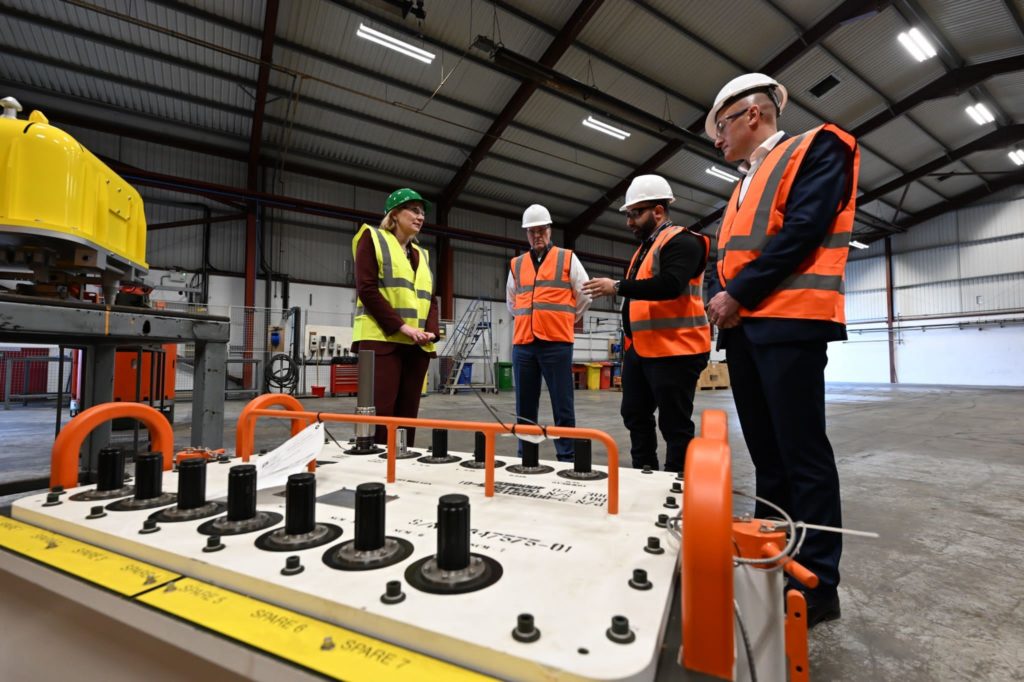Eight key questions about UK oil and gas – answered by an expert
1. Do oil and gas companies get subsidies from taxpayers?
Some describe the oil and gas production in the UK as being subsidised by taxpayers – this is incorrect. There are no subsidies for the UK oil and gas industry.
There are instances when spending on decommissioning can lead to a tax refund because all companies, not just those involved in the exploration and production of oil and gas in UK waters, can offset the expenses of running their business against their profits. These costs are known as Allowable Expenses. If expenses increase profits, the tax due on them will decrease.
Expenses incur after an oil or gas project ceases production – sometimes years after. Decommissioning is one such allowable expense. HMRC rules allow the offset of decommissioning costs against profits reported in previous years. This reduces those profits and the taxes on them, generating a tax repayment.
2. Is UK oil mainly exported?
Many countries import and export oil. There are different types of oil, and not all countries can produce and then process those different types for their various uses.
Transport is the primary use of oil. Some 32 million cars, vans and lorries rely on petrol or diesel, which is a tremendous amount of consumption, under a tonne of oil per UK citizen. We produce 53 million tonnes of oil per year in our waters, with an estimated 45 million tonnes of UK-produced oil leaving our shores. The UK imported 51 million tonnes of oil and oil products from countries including Norway, the US, Algeria and Canada. The Netherlands and China were the biggest purchasers of UK crude oil.
While we continue to import and export oil, we can play a part in reducing oil and gas production emissions in the UK and globally. Production of new reserves, in line with the North Sea Transition Deal, is planned and at a lower rate of emissions than before
3. Why is so much UK oil sent for export?
The UK can’t refine and manufacture the amount of oil-based products it uses. Overall refinery capacity in the UK has fallen by around 30% since 2010. This means we rely on other countries to produce the products we need.
Oil from the UKCS is mainly ‘premium crudes’, meaning they are relatively simple to refine and in high demand. Much of it is transported to refineries in hubs around Europe. Some are in the UK and others in nearby countries such as the Netherlands.
Each refinery specialises in different grades of crude oil and producing particular fuels and chemicals. The UK then imports the fuels and other refined products that it needs to balance customer demand with domestic refinery production.
Essentially the UK is part of a network of refineries with countries exporting and importing according to which specialised products they produce and need.
4. Why is the UK exporting gas just when it’s in short supply?
The UK’s gas supply is mainly from the UK Continental Shelf (our waters) and Norway, augmented by LNG shipments which run to the UK’s three main import terminals: Isle of Grain, Dragon, and South Hook. The South Hook and Dragon LNG terminal in the Milford Haven port, Southwest Wales, was launched in 2009.
The UK lacks gas storage capacity for overall demand. Europe has roughly 105 bcm of gas storage capacity, equating to 22 per cent of annual consumption. By contrast, the UK has just 0.9 bcm of gas storage relative to around 80 bcm. The UK often has a surplus capacity to import LNG. Instead of importing substantial amounts of LNG in the summer and storing it in winter storage, the UK relies on its production and Norwegian pipeline supplies, ‘topped up’ with LNG imports. Europe, by contrast, has comparatively less LNG import capacity.

5. What is the solution?
The solution for all is that the UK takes in extra shipments of LNG and then transports them to Europe via undersea pipelines, which means European gas users can use the UK’s infrastructure to access supplies from the global market.
The UK is physically connected to the continental European market by two interconnector pipelines under the English Channel: the interconnector from Bacton (UK) to Zeebrugge (Belgium) and the Bacton-Balgzand Link (BBL) from Bacton (UK) to Balgzand (Netherlands). The interconnector between the UK and Belgium has 25.5 bcm of bi-directional technical capacity.
Over the past several years, the UK established interconnections between itself and its neighbours, Belgium and The Netherlands. The UK ships gas in the summer and vice-versa in the winter. When its gas use is lower, both Belgium and The Netherlands take advantage of the UK’s additional supply in the summer due to their production and pipeline imports from Norway. In the winter, the UK effectively makes use of continental gas storage stocks in the absence of such seasonal gas storage in the UK.
So over a year, the pipelines balanced supply and demand between the UK and EU.
6. Are UK offshore oil and gas companies creating barriers for their employees to move into working in greener energies?
No. Oil and gas companies are the same companies innovating and producing renewable energies. Scrapping any barriers is in their companies’ best interest.
OEUK are also pushing for that to happen and has signed the North Sea Transition Deal with the government. One of its five goals is skills and improving workers’ ability to work between different energies.
The UK won’t hit net zero by 2050 without our workforce’s skills and experience. The Transition Deal is a roadmap to get us there and could create 40,000 new jobs. We need the workforce’s talents to deliver the innovation, skills and infrastructure to make the Deal happen.
7. The International Energy Agency has said there should be no investment in new fossil fuel supply projects. Are they wrong?
The International Energy Agency has proposed a ‘no new investment’ scenario. This suggests a global halt to opening new oil and gas resources.
Our Business Outlook report warns that such a policy will make the UK and other countries increasingly reliant on Russia and OPEC member states. It would push their share of the global oil supply market from 37% to 52% by 2050, which has obvious implications for UK energy security.
8. The Committee for Climate Change claims it takes 28 years from discovering to developing a new oil or gas field. Is that true?
Correct. When viewing the history of the UK industry, which does not tell the true story. The industry has moved forward with recently discovered oil and gas fields developed over 20 years ago, but with technological advances, these fields are developing now rather than at the time of discovery. Today, these advances are viable, whereas they weren’t in the past.
In the original discovery, there were more investment opportunities in the industry – this meant other fields attractive development. The UKCS’ expanse of infrastructure also means that new fields now can be moved forward quicker than they could have been in the past.
In Conclusion
In summary, these are why it has taken so long to develop new projects. Fields discovered recently have developed in a much shorter time scale. For example, Apache moved from the discovery of the Garten field in 2018 to its first production in 2019. Harbour Energy is aiming for a similar turnaround with the Jade South project, which was only first drilled last year.
Generally, the time depends on a field’s economics, geology, and corporate strategy. But a few years can be long enough from the final investment decision to first gas. They are improving economics with other developments nearby that the new production can attach itself with.
The North Sea Transition Authority, which regulates upstream oil and gas, has powers to sanction obstructive behaviour (e.g. prohibitively high transportation tariffs for third parties).
The Elgin and Franklin fields took 16 years to start up. These are the world’s largest high-pressure, high-temperature development. But subsequent fields came on stream much faster.
The West Franklin reservoir was discovered in 2003 and developed by a deviated well from the Franklin platform. The first production achieved was in March 2007, with the second well coming on stream in September 2008 (four years).
hence
Share this article


